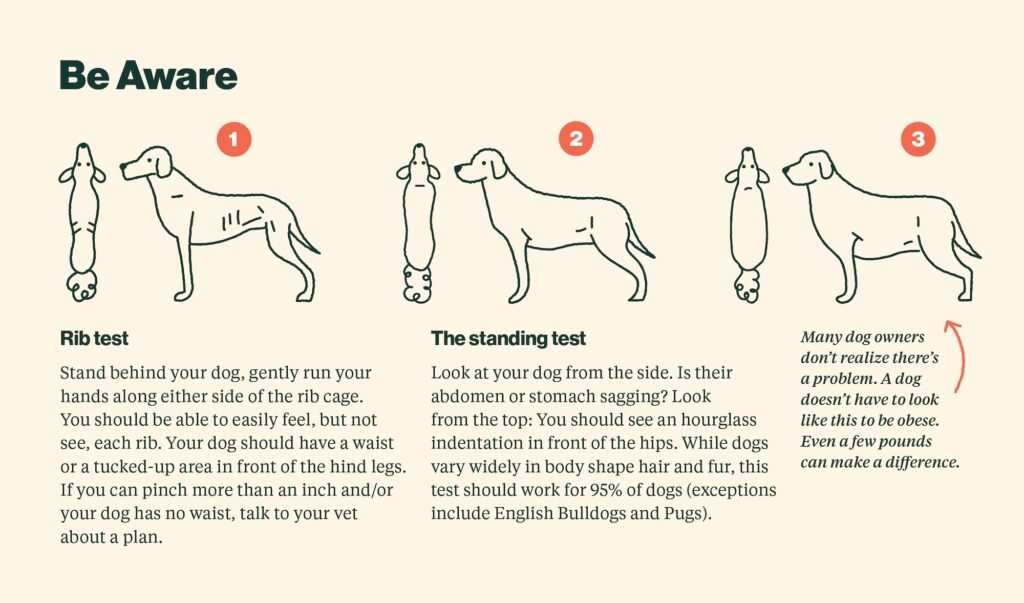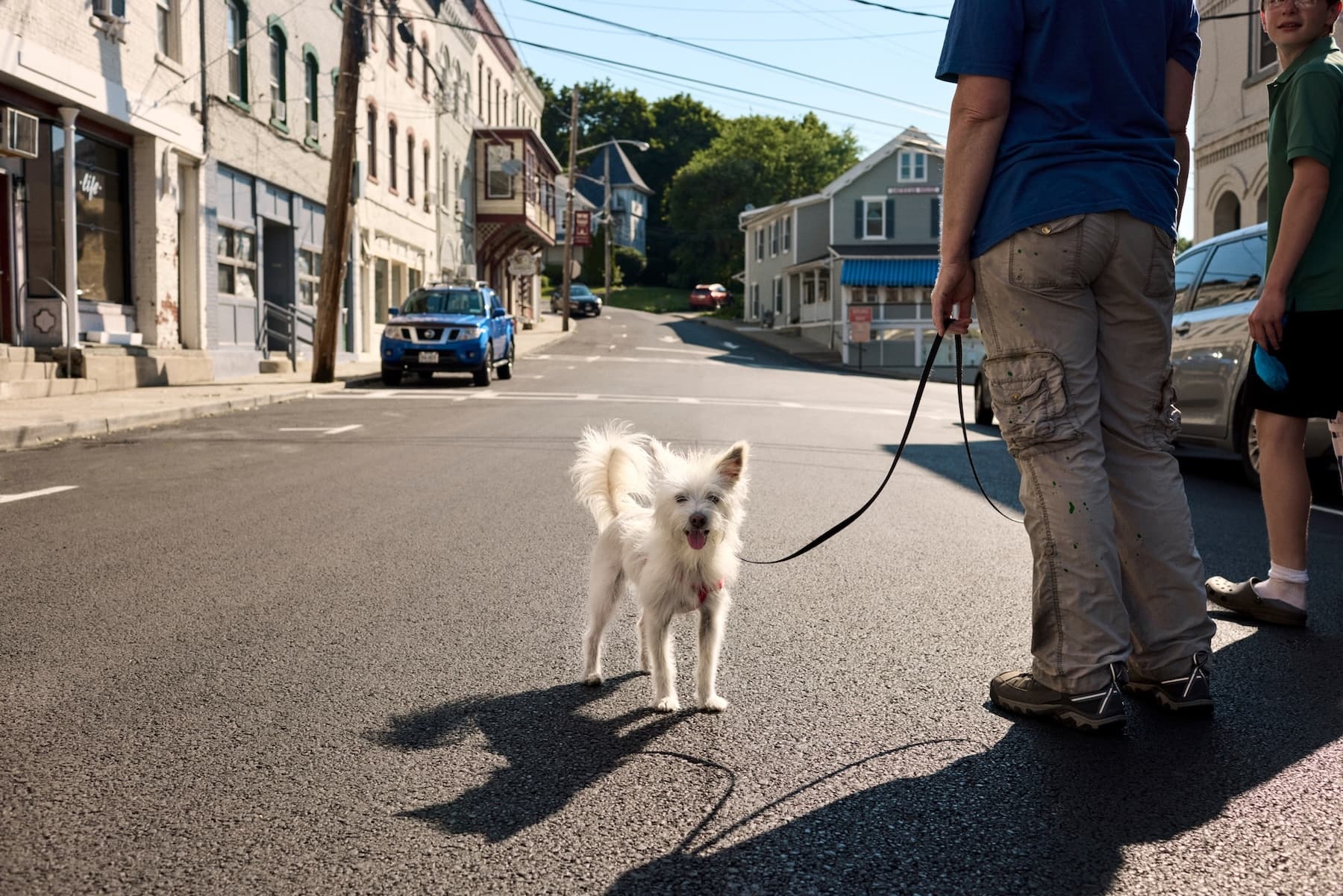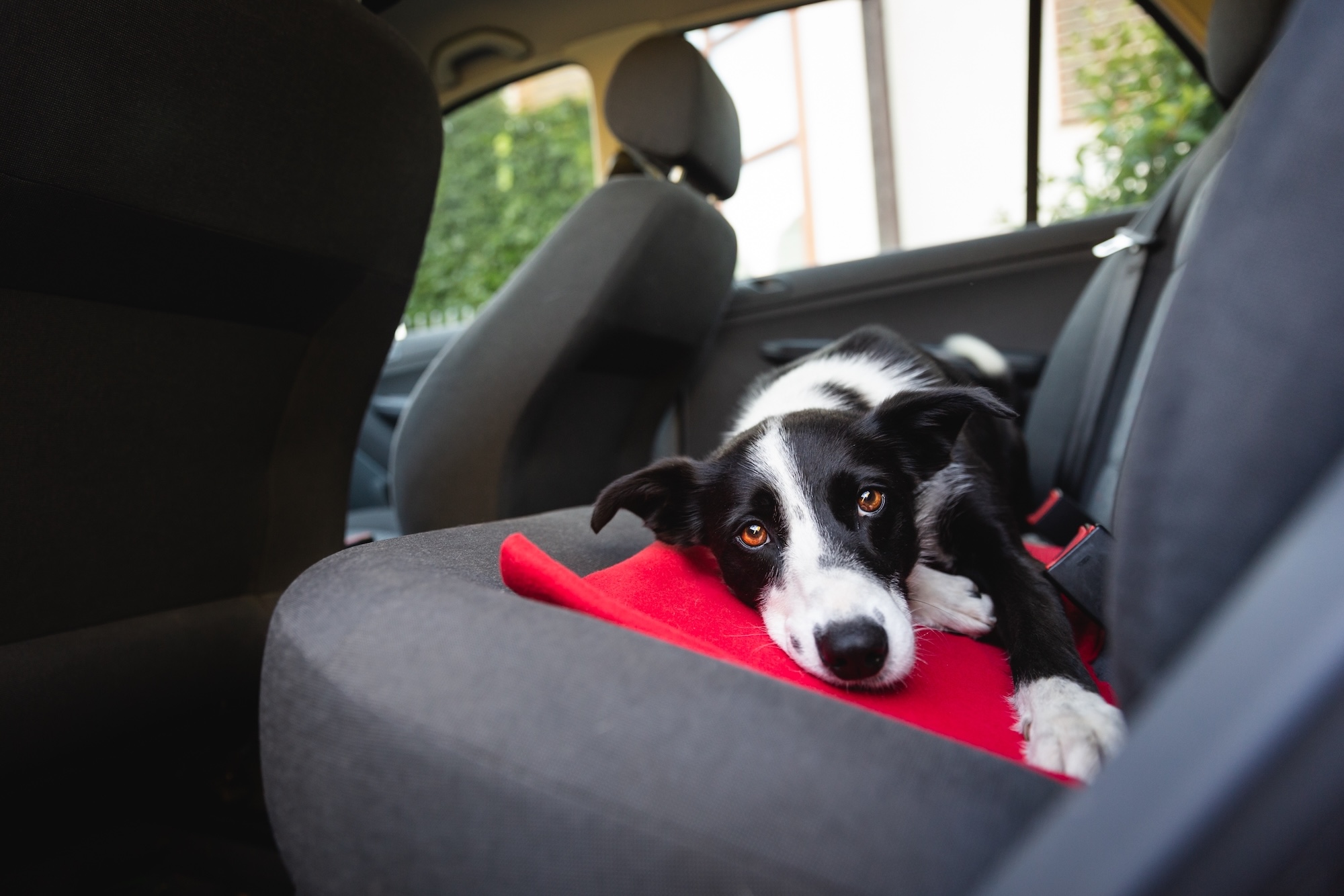Maintaining a healthy weight and body condition is one of the most important things you can do for the long-term health of your dog. And a healthy dog is a lean dog.
But how do you tell if your dog is lean? And how lean is too lean? One simple way to measure and monitor whether your dog is at just the right level of lean is through simple body condition tests. Here’s a guide to “reading” your dog’s body condition at home (and a video demonstration).
Why keeping your dog lean is so important
59% of dogs in the U.S. are overweight or obese. Many vets call excess weight one of the biggest health threats pets face. For a dog, being overweight comes with significant health consequences—it’s linked to numerous ailments including arthritis, chronic kidney disease, bladder/urinary tract disease, liver disease, diabetes, heart failure, high blood pressure, and cancer.
And it doesn’t take a lot of extra weight to start seeing these negative effects. While we tend to think of “a few pounds” in human terms—no big deal—for a dog, those few pounds can be a health hazard (read more about obesity and how to help your dog lose weight here).
At the same time, it’s important that your dog doesn’t become too lean, which could mean they lose muscle mass and their healthy body fat.
This is why being precise about portions is so important, and why we make it easy to update your portions as your dog’s needs change.
Body condition: a key measurement
It’s a good idea to monitor your dog’s weight, checking it regularly during vet visits and ensuring that it stays within the healthy parameters for your dog’s breed, size, and age.
But getting an accurate picture of their body condition is just as important when it comes to weight management, because weight doesn’t tell the whole story, and every dog is different. One 20-pound dog might be rail thin, and another might be chunky, and this is vital information when it comes to determining, and updating, portion sizes.
Veterinarians assess your dog’s body condition by sight and touch using something called a Body Condition Score. Typically using a 1-5 or a 1 to 9 -point scale that ranges from too-skinny (1) to obese (9), they will determine whether your dog needs to lose, maintain, or gain weight, aiming at the ideal range of 4.5—5.
You can use this same technique at home to determine how much fat is on your dog’s frame. It doesn’t require a scale, or any equipment—just your hands, eyes, and a few minutes of hands-on time attention to your dog, which they’ll likely enjoy! Testing body condition this way works for any dog, no matter their size or amount of fur. For dogs with longer or thicker hair, just be sure to rely on the touch tests as not as much of their body contours may be visible.
How to measure body condition
Test the following areas on your dog:
Ribs: Stand behind, or slightly straddle your dog. Look at and feel their ribs, feeling all along their rib cage.
Waist: While you’re in this position, take a look at their shape from above. Gently run your hands down your dog’s body from their rib cage to their hips. Look for the pelvic bone, and look for, and feel their lumbar vertebrae, or spine.
Belly: Stand or sit beside your dog and look at their shape side-on. Look at the slope of the belly as it meets the hind legs. If your dog has longer hair, you will have to also feel for this slope.

One super simple guideline to determine your dog’s body condition:
- If you can clearly see all their ribs, they’re too lean.
- If you can easily feel, but not see their ribs, they’re at ideal body condition.
- If you can’t feel their ribs due to a layer of fat, they are too heavy.
Below, more details on assessing body condition, and a video demonstration.
Ideal body condition
What to look for:
- Ribs are not clearly visible when you’re standing away from your dog, looking from the side (note that in some short-coated dogs, the last few ribs may be visible if you’re standing close).
- A slight hourglass shape, narrowing into a “waist” in front of their hind legs when looking from above. Their ribs should be a bit wider than their waist.
- From the side, an abdominal tuck is visible— that is, the abdominal area behind their rib cage slopes upward as it meets their hind legs, instead of forming a straight line from front leg to back leg.
What to feel for:
- Ribs are easily felt with flat fingers and not much pressure, with just a slight layer of muscle covering them. They shouldn’t feel sharp.
- A slight hourglass shape as their waist narrows ahead of the hind legs. If your dog has longer hair, you may not be able to see this shape clearly, so be sure to feel this area.
- If your dog has very long or thick hair, you may not see the abdominal tuck clearly, which is why it’s important to feel this area. You can also look for the abdominal tuck when they are wet.
While dogs vary widely in body shape and volume of hair and fur, these tests work for nearly all breeds. Some exceptions include English Bulldogs and Pugs due to their stockier shape and excess skin. Breeds like Greyhounds and Whippets will naturally be on the leaner side. Their ribs and waist may feel more prominent in ideal condition, but you should still feel some muscle and fat covering them.
Underweight
What to look for:
- All or most ribs are clearly visible when you’re standing away from your dog. Note that if your dog has long or thick hair, ribs may not be as visible, but they may still be underweight, so it’s important to feel for them.
- Hip bones, and spine are visible.
- A very exaggerated abdominal tuck.
What to feel for:
- Ribs feel pronounced with little to no palpable fat.
- A “bony” feel.
- An exaggerated waistline.
Rounded
What to look for:
- You may see only a very slight abdominal tuck, or no tuck at all.
- A waistline may be visible but won’t be prominent; or their shape will appear straight from rib cage to hips.
What to feel for:
- Ribs can be felt, but with a heavier layer of fat covering them. They may only be felt with significant pressure.
Very overweight
What to look for:
- No waistline visible. They may have a barrel shape when viewed from above.
- No abdominal tuck visible when viewed from the side; belly will instead sag downwards.
What to feel for:
- Ribs will be very hard to feel under a thick layer of fat.
- Pads of fat can be felt on the back, base of tail and neck.
- No waistline will be evident; they may instead be rounded as you feel their midsection.
Measuring body condition for puppies
Puppies have an adorable baby softness that can create the impression that it’s OK for them to be chunky. And puppies are growing machines, so owners want to make sure they’re getting ample food to fuel that growth.
But it’s as important to keep an eye out for your puppy’s body condition as it is for an adult dog, and the same kind of look-and-touch tests that apply to adult dogs can be used on your wee one. Keeping track of your puppy’s weight and making sure they’re at just the right body condition is a great way to set them up for a lifetime of good health.
When to start testing
Before four months, your puppy may not have a defined waist, and may have a rounder belly, and other marks of a healthy, fast-growing pup. A puppy’s body weight often doubles by eight to 10 days after birth. Between one and two months of age, their average daily weight gain will be around three grams/kg.
After four months, you can begin keeping track of their body condition using the same methods outlined above.




